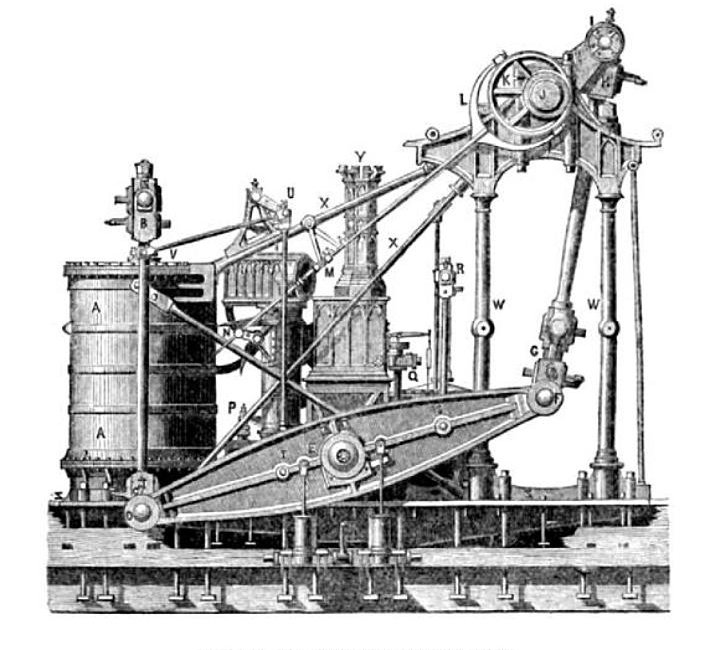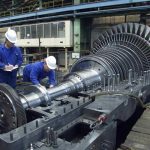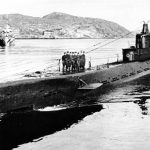The propeller used in the earlier steamships was invariably the paddle-wheel, and the type of engine existing and giving satisfaction on land was naturally adapted at first to rotate these paddle-wheels. Almost all these early engines were, therefore, of the beam type. In America the beam was generally placed over the crank, while in this country it was placed below the crank. The latter type of engine was known as the side-lever engine.
The general arrangement of the side-lever engine is shown in outline in Fig. 1, and it represents the type usually fitted not only in the first steam vessels, but also for some years after.

On the top of the piston-rod is fixed a crosshead with side-rods, S, attached at each end, which, passing down on either side of the cylinder, are connected to the ends, A, of a beam or side-lever, A B, oscillating on a fulcrum or gudgeon at its centre, C.
The opposite ends, B, of these side-levers are fitted with journals carrying the crosstail, to the centre of which, one end of the connecting-rod B D is attached, the other end working on the crankpin D.
The air-pump E is worked by side-rods from intermediate points in the side-levers, the upper ends of the air-pump side-rods being jointed to the opposite ends of the air-pump crosshead, to the centre of which the air-pump rod is secured.
The piston-rod crosshead works in vertical guides to insure parallelism, and the parallel-motion rods used in land beam engines are dispensed with.
Grasshopper engines.
The arrangement of the side-levers was sometimes varied by making them levers of the third order, the gudgeon or fulcrum being at one end and the steam cylinder placed between the gudgeon and connecting-rod. These engines were commonly known as grasshopper engines.
The side-lever type of engine, though very heavy and occupying a large space for the power developed, was safe and reliable, securing a sufficient length of connecting-rod, and having its moving parts practically in equilibrium. It consequently continued in general use for a great number of years, but was at length superseded by the direct-acting type, which was lighter and more compact.


